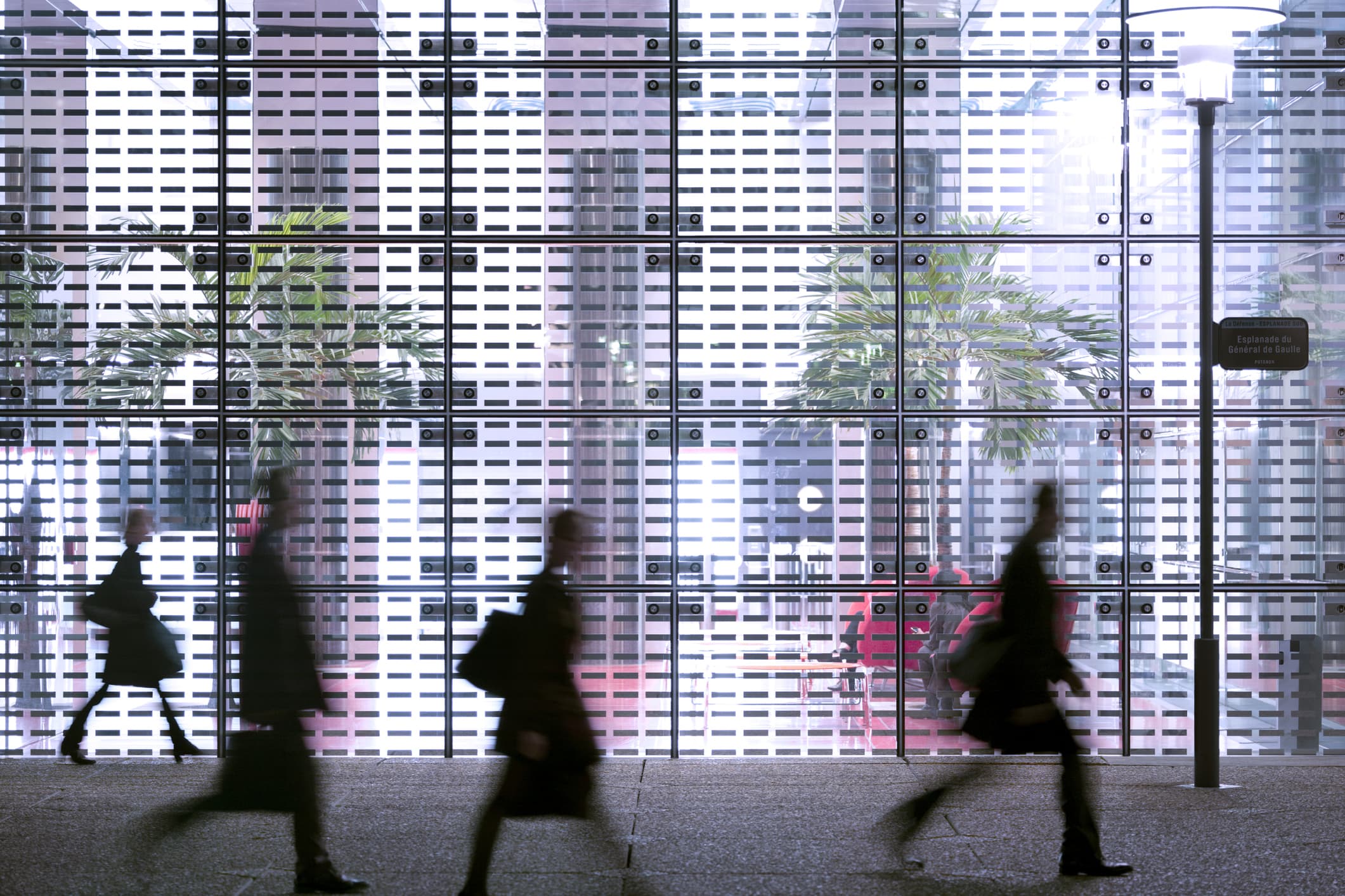
EschCollection | Stone | Getty Images
The next time a company accountant is tallying up operational expenses for their office buildings there could be several new items on the list: sensors, ultraviolet lights and maybe even plants with algorithms.
As companies and building owners re-open office doors after the coronavirus pandemic, they are now faced with greater responsibilities in keeping tenants and workers safe.
Grant Morgan, the CEO of biosafety start-up R-Zero, said that this has opened up a whole new line of business for companies providing products and services around hygiene and safety. Building tenants and employees will expect it, he said.
“We thought that there would be quite a bit of lingering psychological scar tissue if you will, in the eyes, in the minds of the public,” he said. “People aren’t going to want to go back to these spaces without knowing that there’s something different being done.”
R-Zero was born in the pandemic. Last year it rolled out its first ultraviolet disinfection machines for disinfecting rooms. The equipment is typically seen in hospitals but R-Zero has developed a device that can be deployed in offices to wipe out viruses.
It is just one example of the new tech and infrastructure that companies will have to consider which were not on the agenda 18 months ago.
Julie Brandt, executive vice president at elevator manufacturer Otis, told CNBC there’s been a “significant uptick” in interest in solutions for more effectively and safely moving people around buildings.
“The owners, developers, property managers are really concerned about the safety of their tenants coming back into the buildings and understanding that elevators do play a critical role in moving people to their spaces,” she said.
Many may be quick to assume that the enclosed space of an elevator cab is a breeding ground for infections. Otis carried out a study with Purdue University on airflow in elevators that found well-ventilated elevators present a lesser risk than riding on a bus and suggests additional air purification technology and mask wearing to ensure the height of protection.
Otis has deployed cab air purifiers to keep elevators well ventilated, as well as mobile apps to summon elevators to a floor in order to avoid touching buttons. This all fits in with Otis’ investments in the internet of things for monitoring elevator use and maintenance.
“With our IOT systems, we’re able now to really pull more rich data off the elevators and translate that back to the owners, property developers and share with them the dynamics of how their building is changing and then ultimately create different experiences for their tenants using this data,” Brandt said.
Crowd control
A core challenge for many companies and property managers is controlling the swathes of people descending on the building. Crowd control will be a test for many companies.
Density, a San Francisco start-up, rolls out sensors in a building that detect human movement through infrared laser lights. It generates 3D images of people and objects at entrance ways and open floor plans to analyze how these spaces are being used.
Chief Executive Andrew Farah told CNBC that even pre-pandemic companies had little knowledge of the ways their offices were being used.
“As the expectation of the vaccine being distributed became more viable, C-level teams started turning to their heads of real estate and asking a really simple question. ‘How many people are going to come back?’ And the answer from those real estate teams was: ‘We’re not entirely sure but we’ve done some surveys’,” he said.
“The point was that the pandemic pushed C-level teams to collectively accept that they just simply don’t have any data on use.”
Farah said Density’s sensors are a more privacy-sensitive solution compared to cameras that scan offices and lobbies for crowds gathering. He said the data is “anonymized at source,” meaning no identifying information is collected to begin with.
“The data inherently doesn’t collect gender, age, or ethnicity. We can’t fingerprint you by design and the reason that’s really useful is if we’re ever compromised, we’re not compromising our customers.”
Air quality
Effective ventilation of office space remains paramount for keeping buildings as safe as possible but it can be stretched further.
Swiss start-up Oxygen at Work provides offices with tropical plants and accompanying sensors to track air quality and humidity, with data analytics to make sense of that information.
Chief Executive Manuel Winter said the data analysis helps in strategically placing plants around an office to complement the ventilation systems, by helping to reduce CO2 or to increase humidity levels where appropriate. Studies have highlighted that certain humidity levels in a room can help minimize virus transmission.
“This is where safety in terms of virus safety becomes very relevant. An increase in humidity leads to a reduction in terms of viruses, bacteria and other germs in the air. Aerosols are floating around, they will capture the humidity, therefore they become heavier and they will fall faster to the ground,” Winter said.
“The floating time of the virus in the air will be reduced and at the same time also the germs will get deactivated much faster because they are not capable of surviving very long if humidity is rather high.”
Inbound interest from clients has risen this year ahead of office re-openings, Winter added. This demand is reflected in sales and investor interest in new technologies.
Density’s Farah said it has made more sales in the last quarter than it did in the last year while the company has raised over $100 million from investors and R-Zero raised $41.5 million earlier this year from backers.
“One of the realizations we had at the beginning of the pandemic and as we dug into this space, is that we have done a particularly terrible job at keeping humans safe in our natural habitat, indoor environments and the evidence is clear,” R-Zero’s Morgan said.
“I think there’s going to be a demand for cleaner, more hygienic, safer indoor spaces.”



